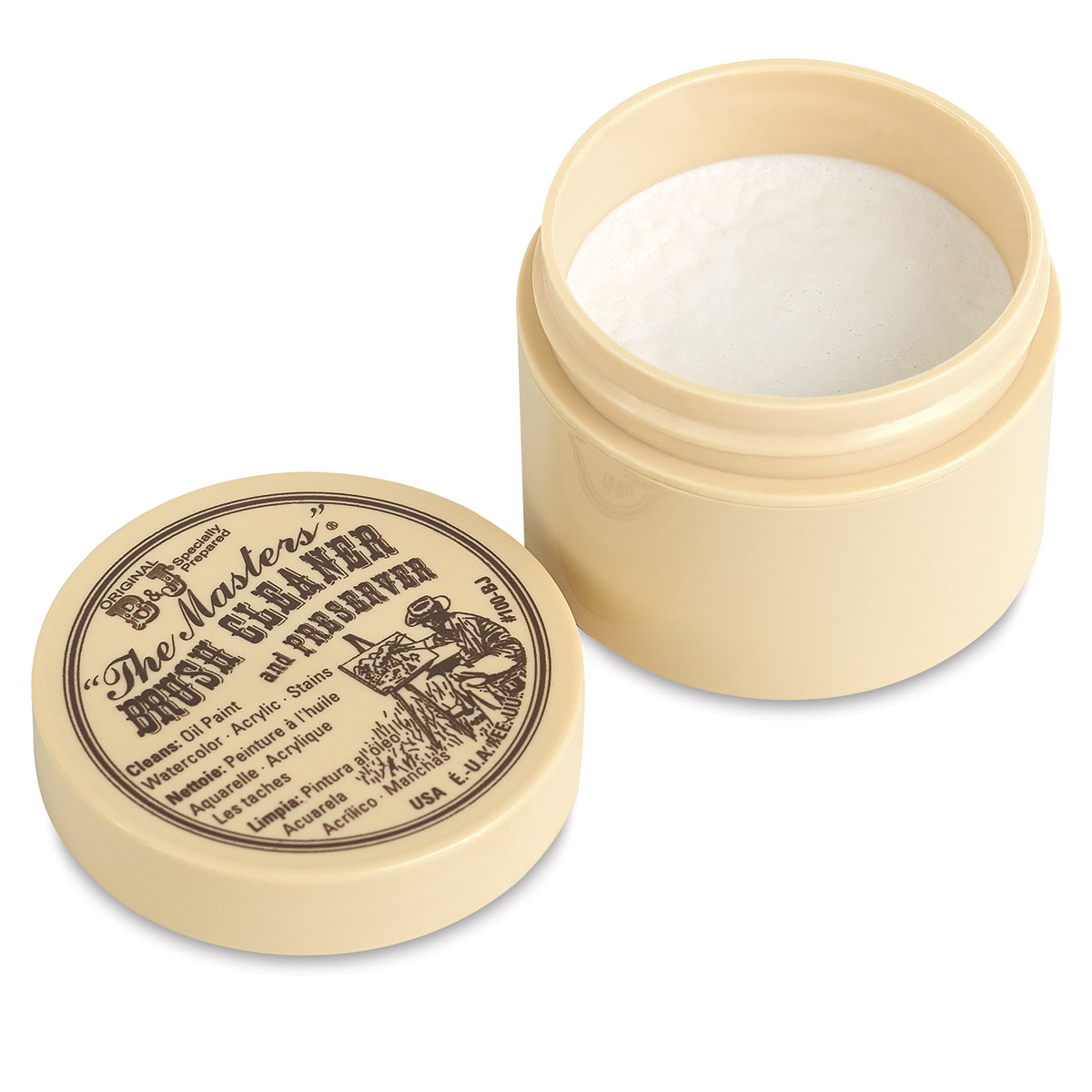Removing Acrylic Paint From Brushes
We've all done it: returned to the studio to resume acrylic painting and to our utter disgust and frustration, found that we neglected to thoroughly clean our paintbrushes from the previous session.
What was once our favorite brushes now look hopelessly ruined. If you are looking for how to remove acrylic paint from paint brushes, you will find the answer below!
Simple Steps of How To Remove Acrylic Paint From Paint Brushes:
- Loosen The Bond
- Rinse The Bristles
- Recondition The Bristles
Once acrylic paint has dried on paintbrushes, it can feel like an impossible task to revitalize the brush. In some cases, the dried paint lodges inside the ferrule and spreads the hairs of the paintbrush permanently apart. That's when they are destined for the useful life of a 'cruddy brush' in my artist's arsenal of paintbrush supplies.
However, if this tragically happens to one of my favorite brushes, I've had great luck with the following steps!
Step One: Loosen The Bond
The first step is to loosen the bond within the dried acrylic with an alcohol based solution like Isopropyl Alcohol or fingernail polish remover. Place enough alcohol in a small cup so that the paintbrush can be submerged right up to the ferrule. Let it sit for a few minutes to an hour. Then rinse and massage the fibers to loosen the acrylic paint. Wash with soap water until all the paint is gone.
If those chemicals sound too harsh, then try my favorite standby. It is something that actually helps condition the paintbrush fibers while it is cleaning!
Say hello to the old standard wood floor cleaner:
Murphy Oil Soap

>>Check Price<<
Simply prop the paintbrush in a small cup with enough Murphy Oil Soap to submerge the bristles and a bit of the metal ferrule. Don't submerge the ferrule completely, because the handle may come loose within the ferrule. If the brush has soft hair, finagle a method to suspend the brush in the cup so it is not pressing the hair bent: perhaps a clothespin clamped onto the handle and braced against the cup edge and secured with a few rubber bands?
For soft brushes, leave them soaking for a few minutes. For bristle brushes, leave the paintbrush soaking overnight.
Step Two: Rinse The Bristles
Rinse off the oil soap the next day in warm water while scrubbing the bristles in the palm of your rubber glove protected hand, or in the bottom of a disposable cup.
It will take a few attempts of rinsing and scrubbing to get all the paint out of the hairs/bristles of the paintbrush and from inside the ferrule.
Take your time and really get it all clean. Once you depress the hairs of the paintbrush and no paint color comes out of the hairs into your hand (or in the bottom of the cup, if you are using a cup), then the fibers are clean of the acrylic paint.
Rinse all the Murphy Soap out of the brush fibers and wipe the excess water off.
Step Three: Recondition The Bristles
Once your brush is clean again, it will probably look a little worse for the wear. While it is still damp, recondition the hairs/bristles by coating it with The Masters Brush Cleaner and Preserver.
Pinch the brush into the shape it was when brand new: flat, pointed or round. Let it air dry with the preserver intact on the brush.
If a flat paintbrush was particularly frayed apart, it may be possible to apply the conditioner, pinch shape the tips into a flat shape, then wrap it in aluminum foil, and apply some weight (like a heavy book) on top of the flat tip of the brush for a couple of days while it dries.
I have been able to rescue a few favorite flat brushes using this method. They never are quite as good as they were when brand new, but they are still serviceable.

>>Check Price<<
I coat my flat brushes with this preserver at the end of each painting session after I have washed my brushes. Some of them are a decade old and still sharp (or flat, as the case may be).
In addition to my favorite wood soap and conditioner, this product is highly loved by artists:

>>Check Price<<
Keeping your brushes clean and in good shape will ultimately save you money and a shopping trip to the store for new brushes. If your brushes do not recover as well as you had hoped, despite a good old 'college try' at cleaning, then don't throw them away!
Instead place them in a convenient spot to grab when you need a texture brush or a good foliage brush for random bushy strokes.
Those old splayed brushes just might end up being your all-time favorite, most used brush of all time!
This artist actually cuts his bristle brushes into shapes to create feathers, fur and foliage in trees and shrubs: What a great idea!! Something to consider if the above steps didn't work to the best of your liking.
Removing Acrylic Paint From Brushes
Source: https://verycreate.com/how-to-remove-acrylic-paint-from-paint-brushes/
Posted by: harristheadis.blogspot.com

0 Response to "Removing Acrylic Paint From Brushes"
Post a Comment